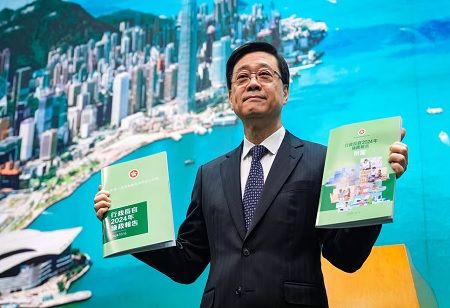- 170 Hong Kong secondary schools approved to offer Japanese, Korean, French, and other language electives for junior students under a pilot scheme.
- HK$250,000 subsidy per school over two academic years, funded by the Quality Education Fund, to support teaching materials and courses.
- Japanese most popular choice due to its similarities with Chinese; scheme aims to enrich learning, spark interest, and boost global competitiveness.
Around 170 publicly funded secondary schools in Hong Kong will soon offer Japanese, Korean, French, and other languages as elective subjects for junior form students. The move comes under a new pilot scheme, which provides each school with a subsidy of HK$250,000 (US$32,000) over the next two academic years.
The Education Bureau confirmed that approximately 170 applications had been approved for the 2025-26 and 2026-27 school years. Schools for students with special needs are also included in the scheme. “Each successful applicant will receive a lump-sum grant of HK$250,000 on or before August 31, 2025, to provide designated other language courses for junior secondary students”, a bureau spokesperson said.
The pilot scheme is funded by the Quality Education Fund. With the current round of applications, the fund will provide at least HK$42.5 million in subsidies over the next two years. The scheme will also open a second round of applications between January and April next year, supporting courses held in 2026-27 and 2027-28.
According to the policy, schools are encouraged to survey students to gauge their interest in the additional languages and assess their current levels of proficiency. Schools are also advised to consider offering an intermediate-level course in the second year after the initial language class.
Among the most popular language choices in the first round of applications were Japanese, followed by Korean and French. Education sector representatives noted that Japanese is especially popular because of its similarities to Chinese, which may make it easier for students to learn. Some learners familiar with Chinese can even guess the general meaning of Japanese texts.
Chief Executive John Lee Ka-chiu announced the pilot scheme in his annual policy address last October. He said it aimed to encourage secondary schools to apply for funding to provide opportunities for students to learn other languages. The scheme also seeks to develop students’ learning interests, enrich their educational experiences, and improve their global competitiveness.
The Education Bureau previously advised schools to prioritise courses already available as electives in senior forms. These included French, German, Japanese, Korean, Spanish, and Urdu.
Lee Yi-ying, Chairwoman of the Subsidised Secondary Schools Council and principal of Kowloon True Light School, said the number of applications represented about 40 percent of publicly funded secondary schools. She described this participation rate as 'not so few' and said the reception among schools has been positive since it is only a pilot scheme.
Her own school already offers Japanese as an elective. She noted that it was easier to recruit teachers for Japanese due to a sufficient supply in the market. She added that Japanese courses were cheaper to run than French or German because the HK$250,000 subsidy is limited. The one-off handout is intended to cover teaching and learning materials, such as textbooks and workbooks.
Also Read: China Builds a New Foundation Starting with Free Preschool for All
All schools joining the scheme are required to submit a detailed course plan, along with progress and final reports at different stages. Many schools, including Kowloon True Light, are expected to participate in the second application round to continue expanding their language offerings.
The pilot scheme reflects Hong Kong’s effort to give students broader learning opportunities, promote multilingual education, and prepare them for a more globally connected world. By introducing Japanese, Korean, French, and other languages at the junior secondary level, the scheme aims to spark student interest and provide a foundation for advanced language learning in senior forms.

